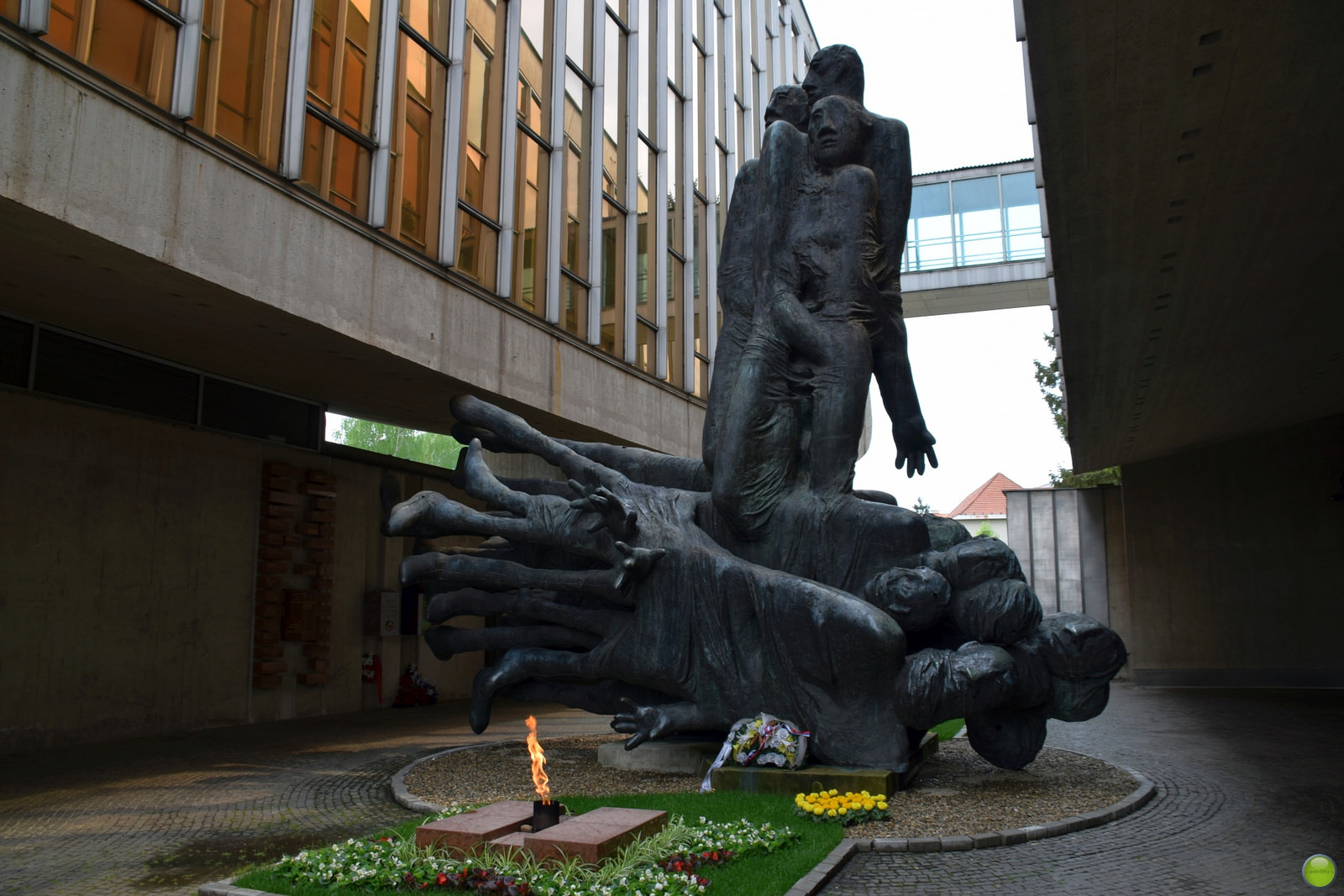The Slovak National Uprising (Slovak: Slovenské národné povstanie, abbreviated SNP) broke out on 29 August 1944 in Banská Bystrica. It was organised by Slovak resistance movement in order to stop the German occupion of Slovak territory and to overthrow the collaborationist government of Jozef Tiso.
Due to the Red Army offensive and the German troops entering the territory of Slovakia with the aim of disarming the Slovak Army, the following order was issued at 8 p.m. on 29 August, 1944, at the initiative of the Slovak National Council: Začnite s vysťahovaním (proceed with the expulsion). This was Lieutenant Colonel Ján Golian, Chief of the Ground Staff of the Slovak Army and commander of the underground Military Centre in Slovakia, giving the prearranged signal to begin the anti-Nazi uprising.
Golian, who advanced to the rank of general on 5 September, 1944, became the military commander of the uprising. He held the position until 6 October, 1944, when he was replaced by Major General Rudolf Viest, who had slipped into the country from London via the USSR. Supreme authority belonged to the Slovak National Council, which from September 1944 was headed by Professor Vavro Šrobár and Karol Šmidke. They served as co-chairs of the Slovak National Council. Banská Bystrica, seized on 30 August, 1944, was chosen to be the capital city, and it was here that the political and military headquarters were established.
The insurgents fought mainly in the eastern part of the country as well as in mountainous areas. The uprising failed to spread to the whole of Slovakia and Bratislava, with the area of hostilities being restricted to an area of approximately 20,000 km2 1.7 million people. The insurgents did not manage to join forces with the Red Army and the Czechoslovak Army Corps, which were halted at Dukla Pass. An additional factor weakening the strength of the insurgent forces was the fact that the Germans managed to disarm the core of the Slovak Army - two infantry divisions that were, according to the plan created by the insurgent leadership, intended to secure Dukla Pass, a key location necessary to establish a connection with the Soviet forces.
The Slovak forces consisted of 18,000 soldiers from partisan units and the Slovak Army, which had reached a strength of 46,000 after mobilization and which led to the creation of the 1st Czechoslovak Army. The Uprising also gained support from the USSR - the 2nd Czechoslovak Independent Airborne Brigade was deployed in the territory occupied by the insurgents, weapons were dropped by parachute, and a Czechoslovak air regiment was sent to an airport controlled by the rebel forces. The insurgents were armed with 46,000 rifles, 4,000 submachine guns, 2,700 machine guns, 200 cannons and mortars, 24 tanks, 4 assault guns, 3 improvised armoured trains, and an air regiment (34 aircraft). It is estimated that about a quarter of the soldiers were unarmed.
These poorly armed guerrilla units faced German forces consisting of about 48,000 soldiers: two Volksgrenadier divisions, the 14th and 18th Waffen-SS divisions, the 36th “Dirlewanger” Grenadier Division of the SS supported by the Slovak Hlinka Guard, the SS Jagdgruppe 232 Slowakei, as well as the Abehrgruppe 218. The disproportionate advantage in weaponry and training allowed the German troops to take Banská Bystrica on 27 October, 1944. It was here, on 30 October, 1944, that the collaborationist president Rev. Jozef Tiso celebrated a Mass in thanksgiving for the suppression of the uprising.
The last meeting of the Slovak National Council and the 1st Czechoslovak Army Staff was held in late October. It was decided that the army would transition to guerrilla warfare, and regular combat ultimately ceased on 1 November, 1944. The commanders of the uprising, the generals Golian and Viest, were taken into captivity and their subsequent fate remains unknown although there are many theories concerning the circumstances of their deaths. The majority of the Slovak Army was either captured or scattered.
The new partisan command moved into the area of the Low Tatra Mountains. In early November 1944 the headquarters of the General Staff of the insurgent forces were established at the mouth of Lomnistá Valley. The living conditions, in the face of the approaching winter, were extremely severe. German reprisals and guerrilla warfare continued until the liberation of the Slovakian territory by the Red Army and the 1st Czechoslovak Army Corps.
Aside from the Slovaks, the participants of the uprising represented 27 nationalities, including 3000 Czechs, 800 Hungarians, and 250 Poles. 1,720 insurgents were killed, 3,600 wounded, 10,000 captured in regular combat, and up to 12,000 killed or recorded as missing in the course of the guerrilla warfare. The Germans suppressed the uprising at a cost of 4,200 deaths, 5,000 wounded, and 300 captured.
By Daria Czarnecka
Bibliography:
Jašek Peter, Kinčok Branislav, Lacko Martin, Slovenskí Generáli 1939-1945, Prague 2013.
Kościelak Lech, Historia Słowacji, Wrocław 2010.
Slovenské národné povstanie 1944 súčsť európskej antifašistickej rezistencie v rokoch druhej svetovej vojny, ed. Peknik Miroslav, Bratislava 2009.
This article was prepared in cooperation with Historykon.pl.
